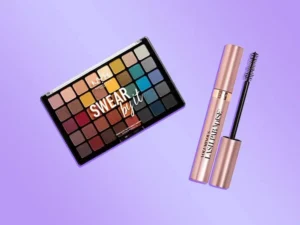
In the culinary world, precision matters. Recipes often call for specific measurements to ensure the perfect balance of flavors and textures. However, understanding fractions, especially when dealing with measurements like cups, can sometimes be confusing. One common question that arises is: What exactly is one-third of a half cup? Let’s delve into this topic to demystify fractions and their practical application in the kitchen.
1. Deciphering Fractional Measurements:
1.1. Fraction Basics:
Fractions represent a part of a whole, and they consist of a numerator (the top number) and a denominator (the bottom number). In cooking, fractions are frequently used to measure ingredients, with common examples being cups, tablespoons, and teaspoons.
1.2. Breaking Down the Half Cup:
A half cup is a common measurement in cooking and baking. It’s equal to 1/2 of a standard cup, which is approximately 8 fluid ounces or 120 milliliters. When dealing with fractions, it’s crucial to understand that dividing a half cup into equal parts involves simple arithmetic.
1.3. Calculating One-Third of a Half Cup:
To find one-third of a half cup, you can start by understanding that one-third is half of two-thirds. Since a half cup represents two-thirds of a whole cup, one-third of a half cup is essentially one-third of two-thirds, which mathematically translates to 1/3 * 2/3 = 2/9.
2. Practical Applications in Cooking:
2.1. Recipe Adjustments:
Knowing how to calculate fractions is particularly useful when adjusting recipes. If a recipe calls for a half cup of a particular ingredient but you only need one-third of that amount, you can accurately measure out 2/9 of a cup to maintain the recipe’s balance.
2.2. Ingredient Substitutions:
In some instances, you might need to substitute one ingredient for another. Understanding fractional measurements allows you to make precise substitutions without compromising the recipe’s integrity. For example, if a recipe calls for half a cup of milk but you want to use one-third of that amount, you can easily calculate the appropriate measurement.
2.3. Portion Control:
Fractional measurements also play a role in portion control, especially when following dietary guidelines or managing calorie intake. By accurately measuring out one-third of a half cup or any other fraction, you can control serving sizes and ensure that meals align with your nutritional goals.
3. Practical Tips and Tricks:
3.1. Use Measuring Tools:
Investing in quality measuring cups and spoons can significantly simplify the process of working with fractional measurements. Look for tools with clear markings and precise increments to ensure accurate results.
3.2. Practice Math Skills:
Improving your math skills, particularly in fractions and basic arithmetic, can enhance your confidence in the kitchen. Regular practice with measurements and conversions will sharpen your ability to work with fractional quantities effortlessly.
3.3. Double-Check Measurements:
When in doubt, double-check your measurements to avoid errors. Take your time when measuring ingredients, and use the appropriate utensils to ensure precision. Remember, a small miscalculation can sometimes lead to significant differences in the final outcome of your dish.
Conclusion:
Understanding fractional measurements, such as one-third of a half cup, is an essential skill for anyone interested in cooking or baking. By mastering basic arithmetic and applying it to practical scenarios in the kitchen, you can confidently navigate recipes and make precise adjustments as needed. Whether you’re scaling ingredients, substituting items, or controlling portion sizes, fractional measurements empower you to achieve culinary excellence with accuracy and consistency. So the next time you encounter a fraction in a recipe, embrace it as an opportunity to showcase your mathematical prowess and elevate your culinary creations.





